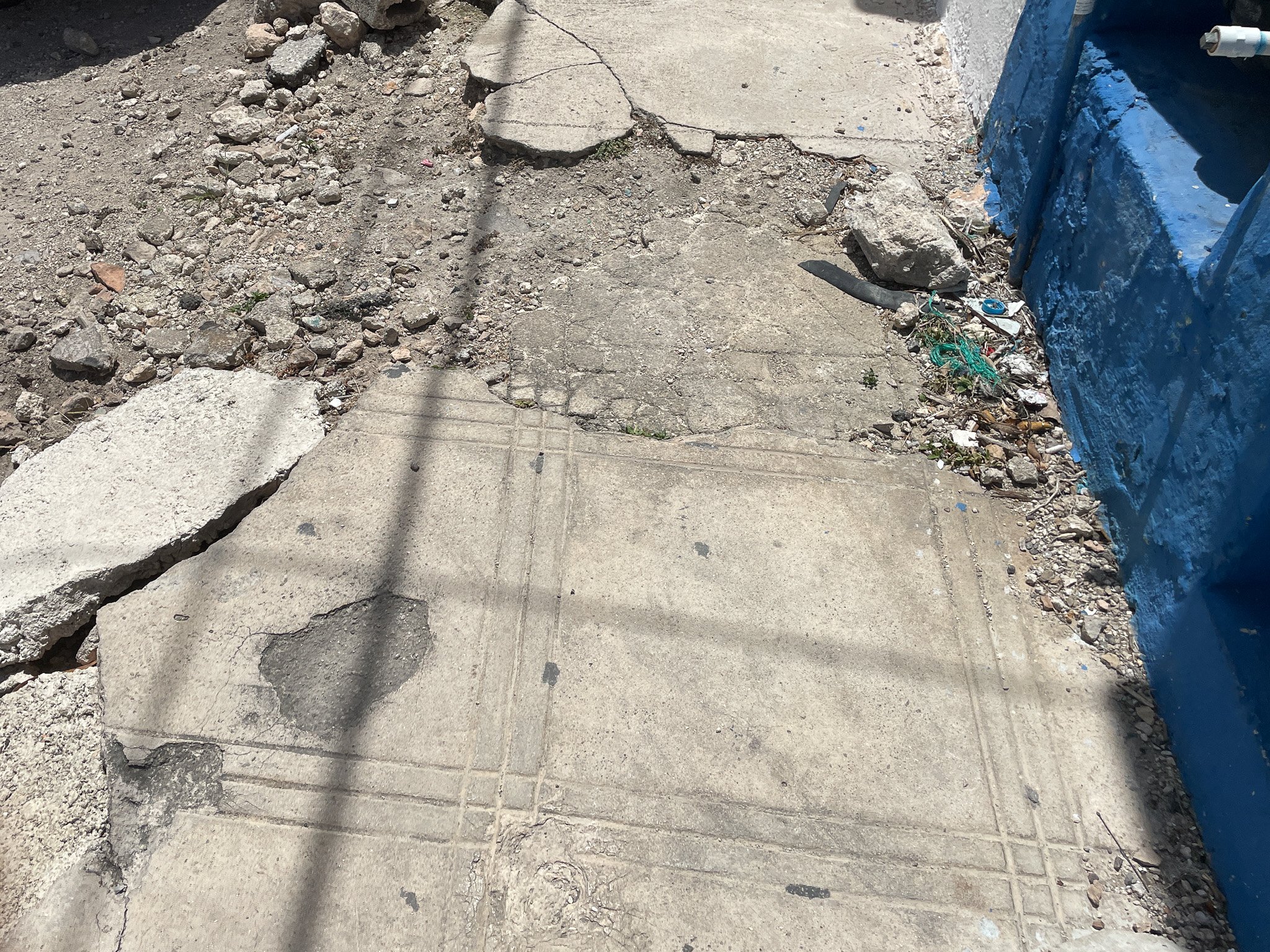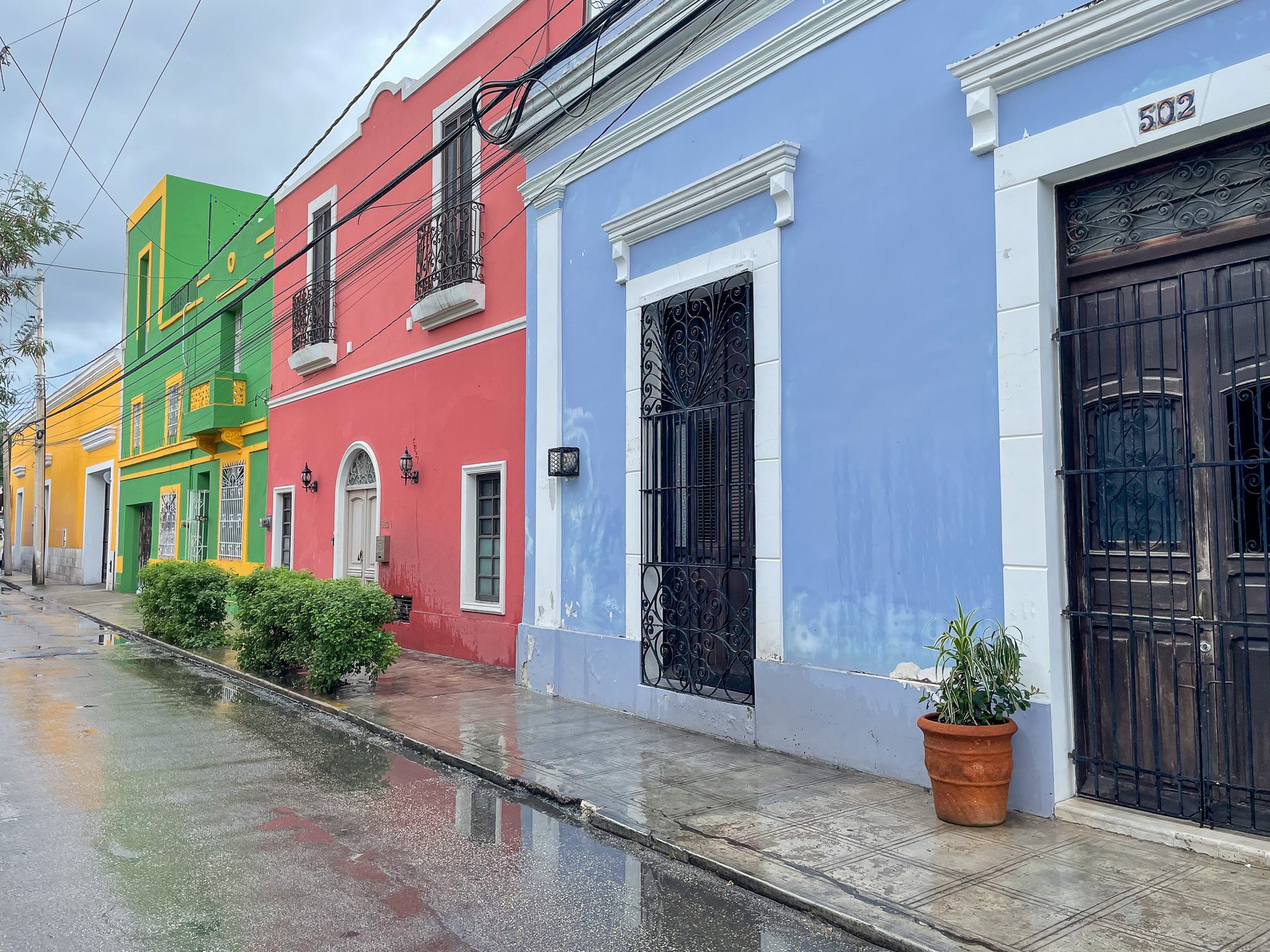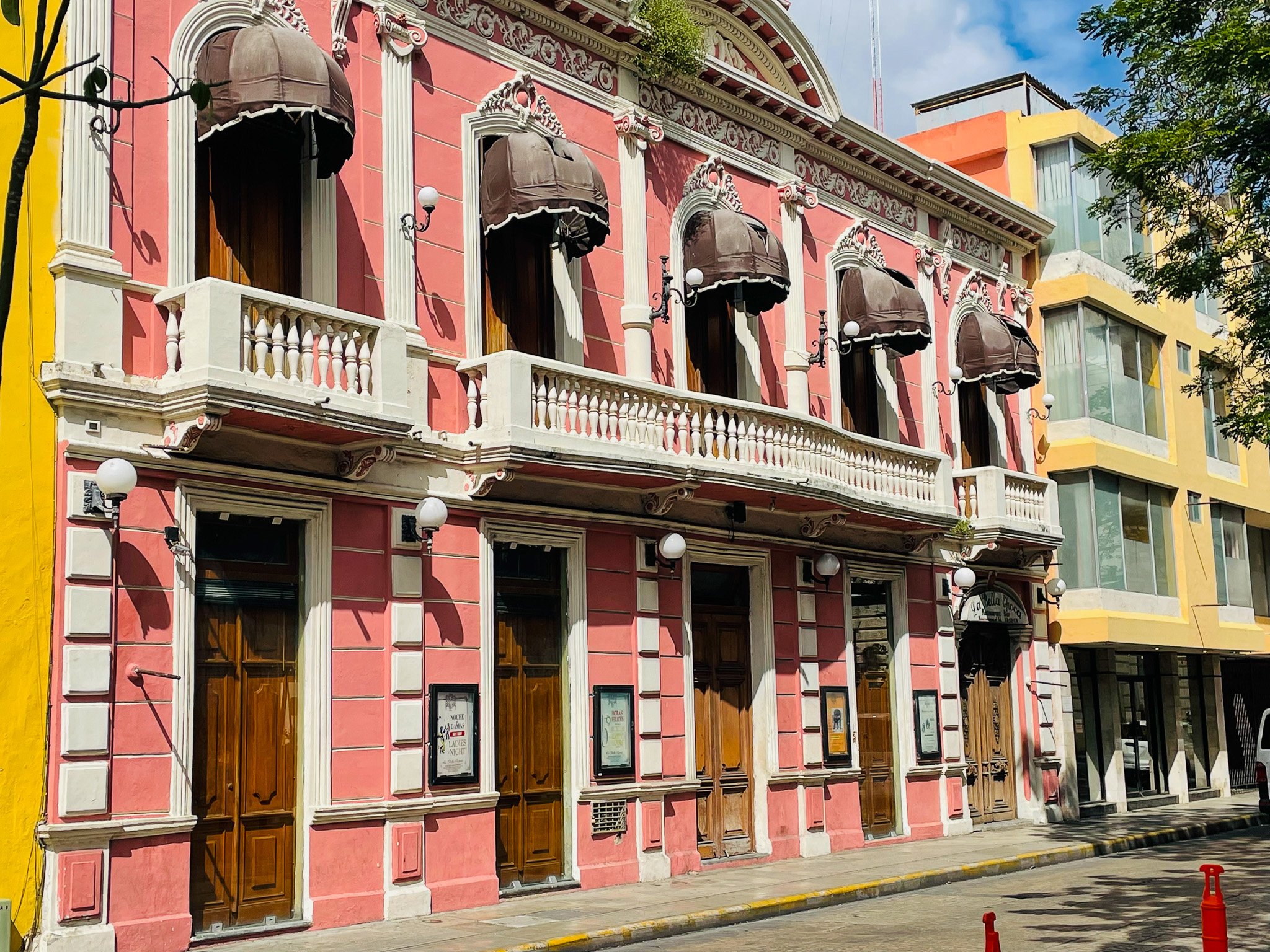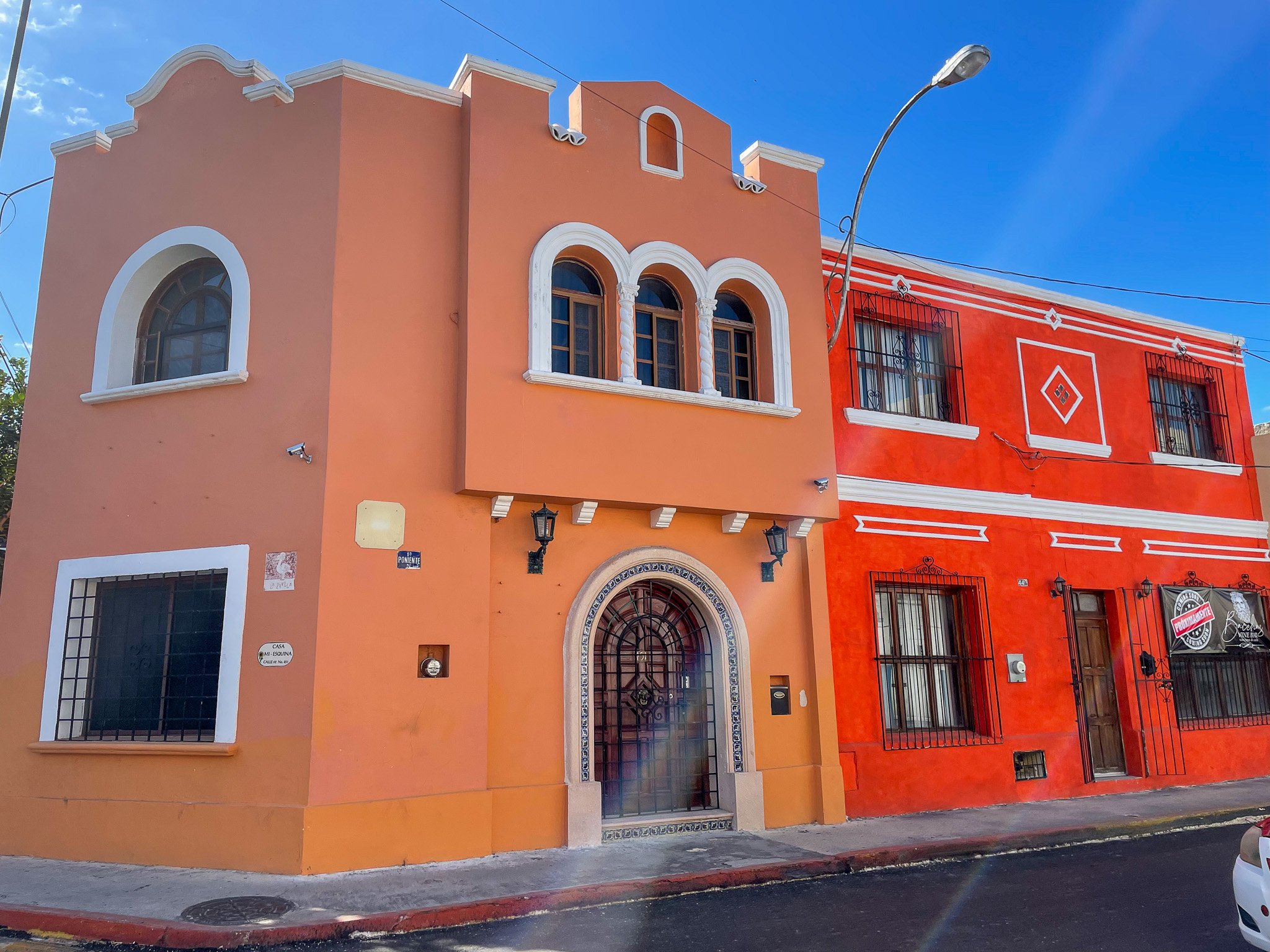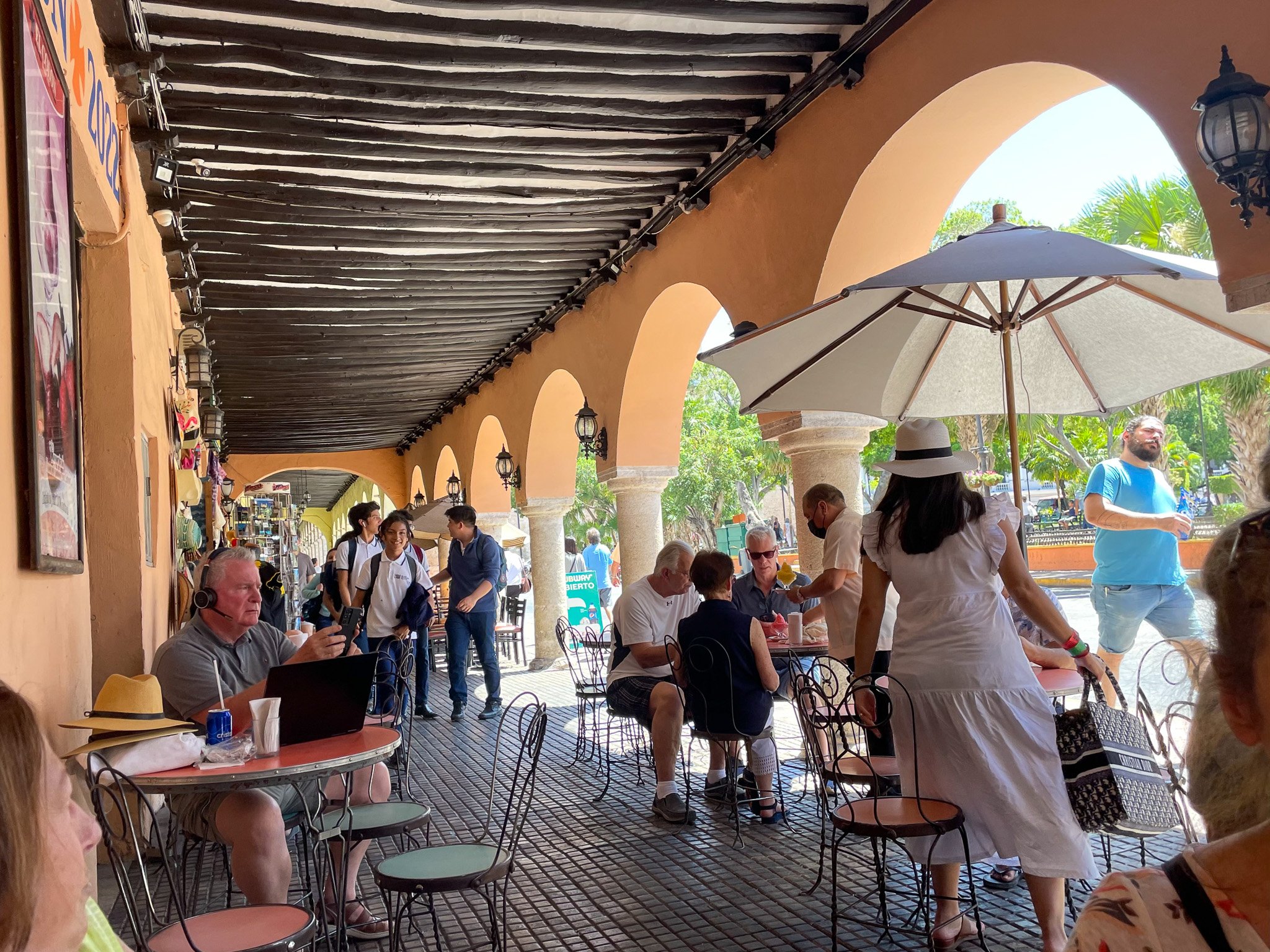Merida, Mexico as Foil to Victoria (Guest Post by Stephen Young)
This article is written by guest author Stephen Young. Stephen has resided in Victoria since 1973. During his 50 years of residency in our City he has seen, and felt the impacts of the changes that have transformed Victoria into “something less than it could be.” With a background in media production and presentation, a career from which he has long since retired, he now spends much of his time traveling the world and noting the “way things could be” here in Victoria.
Since this is an article I’m writing for the Sidewalking Victoria blog, I feel that it’s my duty to begin by saying that I recently returned from a six month stay in a city which has, ostensibly, many of the worst sidewalks anywhere I’ve been. While I’ve not been everywhere, like Canadian country singer Hank Snow claims to have done, I can say I’ve been to many places around the world.
One of those places is the city of Merida, Mexico where the municipality does not maintain their sidewalks, but rather leaves that responsibility to the property owners in front of whose buildings the sidewalks pass. So, one can only imagine the diverse and sometimes dangerous sections, which must be carefully navigated lest one trips, stumbles and falls into a pit of rubble or an unexpected hazard of some other kind.
But wait a minute, Merida is a wonderful, splendid city, filled with colour, amazing public art, public squares dot the city everywhere and astounding Spanish colonial buildings, refurbished and well-preserved, all of which form a huge part of the culture and beauty of the city.
So, why worry about the sidewalks you may ask? Well, quite frankly, other than watching one’s step when heading down to Centro Historico and the tree lined, shady Centro Square, known as the Plaza Grande, the sidewalks enroute to the square lead past colourful casas and grand heritage structures where music and laughter often ring out as one passes them.
Or where a stroll along the grand Agendas and Calles which line the beautiful, tree lined pedestrian friendly Paseo Montejo are a testament to the early Spanish settlers who built their ornate haciendas along the wide avenues and streets, along which they planted gracious Royal palm trees and created beautiful, leafy gardens to adorn their homes and to provide shade from the hot Mexican sun.
Merida is a happy place, filled with happy and ever so helpful and obliging residents, many of whom are descendants of the original Mayan people that once ruled this land, located in the heart of the jungle on the Yucatán Peninsula. Today the Mayan locals value their own culture, as well as that of their fellow citizens, the Yucatecans, descendants of the Spanish conquistadors who came to plunder the gold and other resources that were treasured by the Mayans.
How does one compare such a city with our oft-time described grey and forlorn city of Victoria? Sure, we have well-maintained sidewalks, and in some parts of our downtown there still survive a few scraggly trees, many looking as though they’re ready to fall by the wayside, or limbs torn asunder by random acts of violence, or species wrongly chosen to deal with the ravages of our wet and windy winter weather, followed by our hot and arid Sumer months. Could we not select more imposing and suitable trees to line our downtown streets and our few barren public squares? As well, several buildings require, what I’d describe as a good, wash and brush up, a coat of paint and a riddance of the bird droppings which adorn so many of the ugly and ill-maintained vinyl canopies that overhang their business fronts.
Speaking of squares, for those of you who may remember, Centennial Square was once lined with dozens of trees, although for the life of me I can’t recall what species they were. But whatever they were, they provided a canopy of leafy shade under which residents could rest awhile and shelter from the summer sun. Unfortunately, they attracted hundreds of noisy Starlings, who left their droppings and made nests inside the trees creating a cacophony of sound that troubled the City of Victoria council and staff in the adjacent City Hall. So, the decision was made to chop down the trees and thus deprive the Starlings of their home. As hoped for by the powers that were, the trees were removed and the birds moved on, to who knows where? I’ve never seen them since. Now the square sits forlorn, denuded of the shade and leafy beauty of those trees, and missing the “noisy” but arguably happy chirping and cheeping of the Starlings, since replaced by a patch of grass and an abundance of concrete.
Not so in Merida, where in the Plaza Grande, local birds such as Crackles, Mockingbirds and Hummingbirds flit to and fro from tree to tree, chirping and chatting, providing a cheerful background of sound to the park goers seated on the many benches that dot the wide walkways around the square. It’s a happy feeling to rest one’s legs, beneath a shady tree, whilst listening to the birds and watching the locals come and go, some selling their wares to the many tourists who come to visit every year or chatting amiably to one another as they watch the world go by. The square is easy to access being just one step up from the surrounding streets, is lined with trees and, deeper within there are smaller “squares” each surrounded by seating benches and where a variety of plantings of trees and shrubs add to the coolness of the square when one is seated in the afternoon sun. It’s also a festive place where dancing and musical events are frequently held and where local vendors invite you to sample and, hopefully, purchase their wares, but never in an aggressive manner, such as one might encounter at the popular tourist beach resorts, like Cancun or Playa Del Carmen.
The Paseo de Montejo is an iconic tree-lined avenue, renowned for the Sunday tradition of closing during the morning in order to allow only pedestrians and cyclists to enjoy its beauty. Along its route are some of the most beautiful buildings in Merida, a residual heritage from the early days of the agricultural pioneers. Somewhat akin to Victoria’s Blanshard Street, running approximately 13 blocks from north to south, starting at the Monumento a la Patria, which is one of the most photographed structures in Merida where it is a tradition for locals and visitors alike to visit the many cafes and shops. The Perhaps Victoria should consider the installation of a similar monument that reflects the heritage of our city in a grand and respectful way.
I’d be remiss if I did not mention the many captivating corner stores that retain their early architecture and remain, even today as an integral part of their local barrios. Could we not restore and embellish the few remaining shops that formed a vital part of our city until not so long ago, when gradually they began to disappear from the downtown landscape to be replaced by large office towers or condo buildings? We have a lot to gain by restoring and respecting the streets and buildings that form a large part of our heritage and can only gain in stature and local colour by so doing.
Merida is known as the safest city in Mexico, and it’s so true. My wife often expresses how she feels safe when walking alone at night, enroute to a musical event or returning home from dinner with a friend, something she tells me she’d never do back home in Victoria.
This begs the question, how important are sidewalks when compared to the larger lifestyle choices and the respect for their surroundings, as shown by the locals in Merida? Unlike Victoria, where sidewalks are generally well maintained and easy for most of us to walk along. But here lifestyle choices, or perhaps circumstances, have created an atmosphere of fear and loathing in Victoria, where residents are often afraid to venture out into the downtown streets after dark.
What is it that breeds safety and respect for one’s city? Why the big difference? My belief is that harmony and helpfulness are dominant players in the overall success of any city. Victoria is divided and split along so many cultural, political social and other lines and the focus tends to be divisive and lacks the respect and dignity our city deserves. Shop windows are smashed, violent random assaults occur with increased frequency, poorly maintained buildings line much of the downtown business and shopping areas, other than a few exceptions such as LoJo and the popular tourist areas along Government Street and Chinatown.
So, we seem to have devolved into a city that doesn’t enjoy life, but rather fights it every step of the way along the sidewalks that seem to lead to, well nowhere much, to be quite honest.
What happened to our beautiful City of Gardens, once internationally renowned as a “special place to visit”? That is now long gone, or so it seems, replaced by the desire to become a (and how I hate this terminology) “A World Class City,” dotted with high rise condo towers which, ultimately will be designated to join the ranks of the Gulag style construction of the 1950’s Soviet Union.
Should we not, instead, follow the example of Merida? Where colourful buildings, flora fauna, people-oriented spaces and respect for heritage, set up a common attitude of respect and happiness for its citizens? We can do it if we try, so, as we walk along the sidewalks of Victoria, try to imagine how we can strive to create a happy place and a bright future for everyone of us by adopting a similar attitude as those folks in Merida?
Which is more important and could, arguably, be more successful in creating a city where colour, harmony and happiness live? I’ll place my bets on the respectful and cooperative attitude of the residents of cities like Merida, who are proud of their city, their heritage and their unity to ensure that their lifestyle retains a richness that goes beyond material possessions and instead focusses on their everyday ability to live in harmony with each other, rather than fighting an endless battle between the myriad of groups who support different perspectives woven into the fabric of our Mosaic Society and reinforced by the social media pundits who argue back and forth in attempts to persuade their audiences that the world is coming to an end. Let’s instead let this be the beginning of something better than what we’ve allowed our city to become, starting here, starting now.
All photography in this article was taken by Stephen Young.


